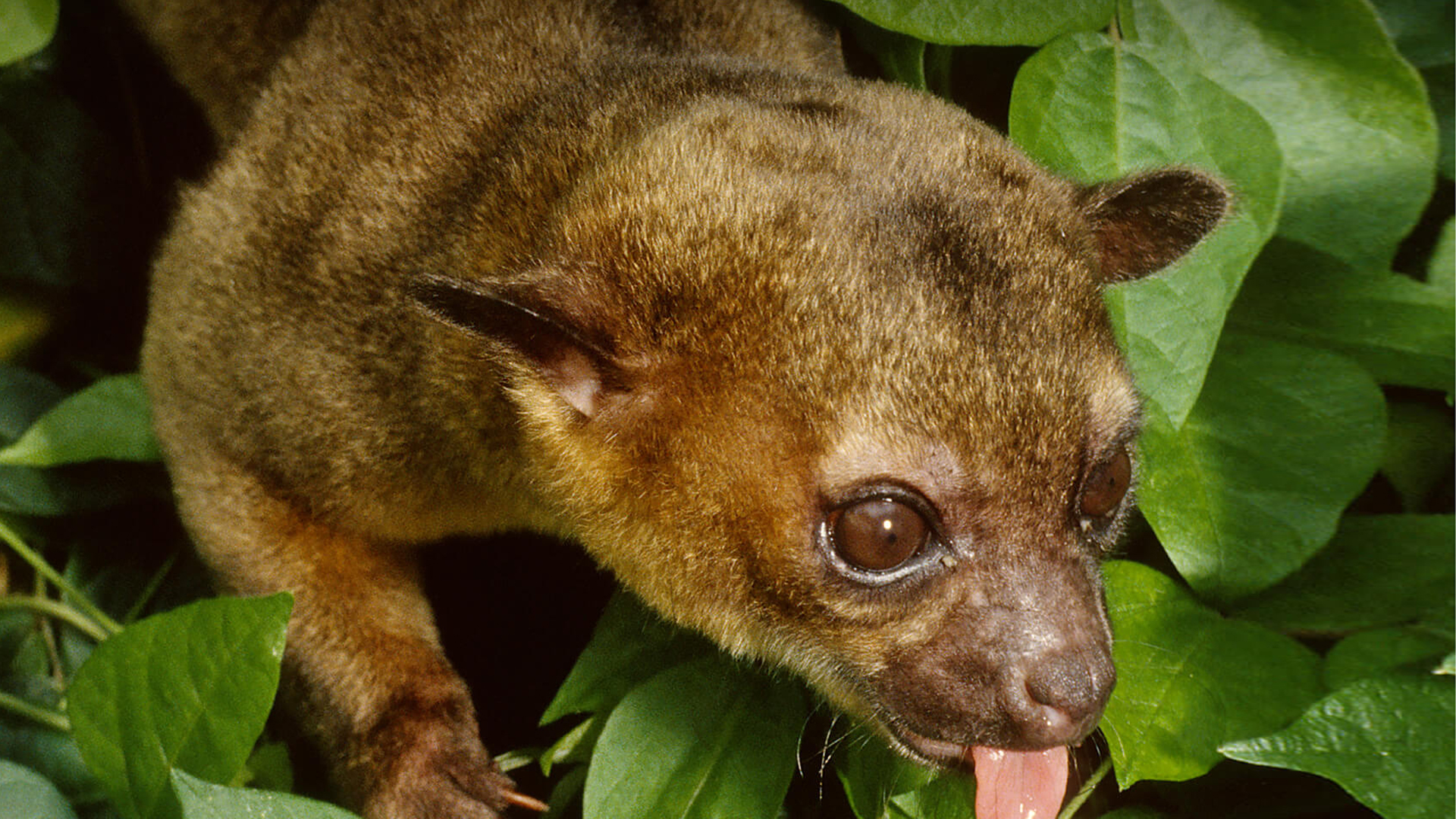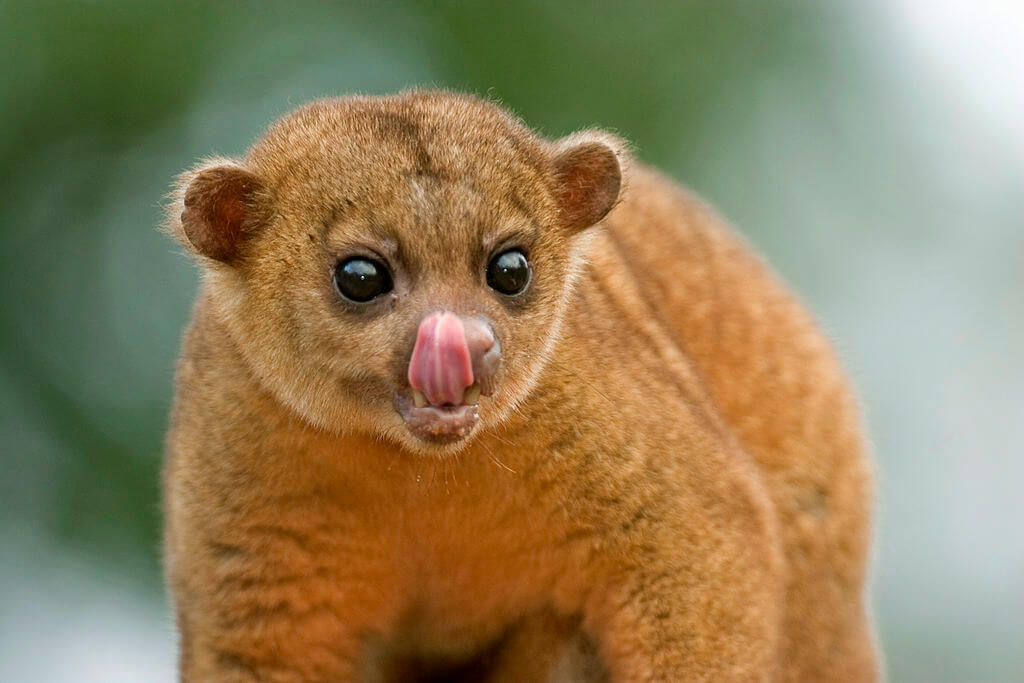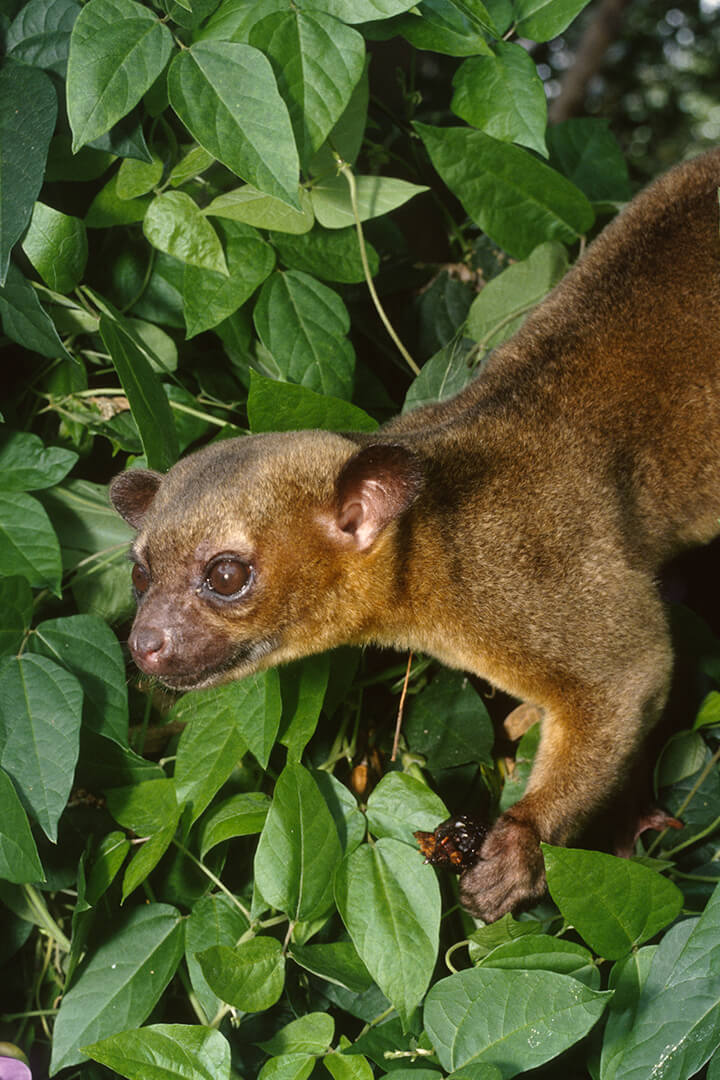How Many Kinkajous Are Left in the World
They are not endangered as of yet but the destruction of their environments may soon change that classification. The Only Kinkajou Sanctuary in the World.

Kinkajou San Diego Zoo Animals Plants
In the biggest such raid in US.

. The remaining 20 consists of. At the moment there may be as few as 180 of them left in the wild. State officials arent sure how one made its way to Lake Worth in the first place.
Diet Kinkajous are sometimes called honey bears because they. Kinkajous also have short-haired fully prehensile tails like some New World monkeys which they use as a fifth hand in climbing. The underbelly has orangish or.
There are many other species of capuchin that have also been listed as endangered. To learn more about world population projections go to Notes on the World Population Clock. The gourmet kinkajou diet.
These include the darker. Looking a bit like a monkey kinkajous are often mistakenly called primates. They do have many traits and features like those of primates.
Kinkajous arent endangered but their numbers are thought to be decreasing. These special mammals find their way to other parts of the world because of the pet trade. The population is known to be decreasing but by how much is not known.
Though many of its features and traits sound like those of a primate the kinkajou is actually related to the raccoon. One of the rainforest canopys more surprising inhabitants is the furry and fearless kinkajou. All trade figures are in US.
The number of Fennec foxes in the world is not actually known as they are difficult to keep records on. Their forest habitat is being disturbed and destroyed in many. Over the years kinkajou population has been hurt by the pet trade.
Indeed the Kinkajou is the only member of the Procyonidae family to have a prehensile tail adapted for seizing and grasping used for balance and support. However they are a part of the ring-tailed family. However it is estimated that there are between 9840 and 19200 remaining Fennec foxes worldwide due to the last assessment in 2019.
The bed-sharing kinkajou from 2016 turned out. The average lifespan of a kinkajou in captivity is 23 years. Kinkajous have a high-pitched jarring scream.
Because of this critters cute looks many people think they. Long Lived When kinkajous are in human care they can be quite long-lived. Dollars on a nominal basis.
The white-throated or Ecuadorian capuchin is the most critical of all species. Populations shown for the Most Populous Countries and on the world map are projected to July 1 2022. It also helps them avoid bee stings when they forage for honey.
There are 20000 skunks left in the world. There are many other species of. How many skunks are left in the world.
History on December 15 2009 Arlington Texas officials and humane agents removed more than 26000 animals including kinkajous wallabies sloths ringtail lemurs coatimundis agoutis hedgehogs chinchillas hamsters gerbils rats mice flying squirrels guinea pigs sugar gliders prairie dogs ferrets snakes lizards turtles frogs. Capuchin monkeys are unfortunately listed as critically endangered. Kinkajous arent native to the US but its possible to get a permit to keep one as a pet.
Their feet are adapted to climbing trees in the canopy. Habitat of the Kinkajou. This of course is a blessing and a curse.
The common name kinkajou comes from a word that means honey bear as kinkajous raid beehives for the golden liquid. Unfortunately kinkajous are hunted for their fur and meat in their indigenous locations. Capuchin monkeys come in several different species.
An average adult kinkajou weighs 2 3 kilograms 4 7 pounds. Kinkajous grow to an average body length of 17 22 inches their tail is 16 22 inches in length in addition to the body. As you might have guessed the kinkajou has quite a sweet tooth.
Capuchin monkeys are unfortunately listed as critically endangered. The kinkajou has dense woolly fur which is coloured a golden brown with some animals displaying a grey-brown or dark brown coat. The oldest recorded kinkajou was a 40 years old male named Sugar Bear at the Honolulu zoo.
How many asian small clawed otters are left in the world Showing all 2 results Default sorting Sort by popularity Sort by average rating Sort by latest Sort by. To learn more about international trade data go to Guide to Foreign Trade Statistics. How Many Fennec Foxes Are Left in the World.
The white-throated or Ecuadorian capuchin is the most critical of all species. At Kinkatopia we feed well-balanced diets and pride ourselves on nutrition by variety. Many mistake kinkajous as some kind of lesser primate due to their long tails flexible fingers and tendencies for social behavior like group grooming.
At the moment there may be as few as 180 of them left in the wild. This is because they are safe from predators and have access to medical care. We feed an 80 produce-based diet fruits with a mix of vegetables.
Kinkajous are difficult to spot in the forest and have often been seen hanging upside down by the tail whilst feeding. The kinkajou is an arboreal mammal meaning that it lives most of its life high in the trees. The dense fur protects them against the rain.
The kinkajou typically weighs 3 to 7 pounds and dwells in the forests of Central and South America.

Kinkajou San Diego Zoo Animals Plants

No comments for "How Many Kinkajous Are Left in the World"
Post a Comment